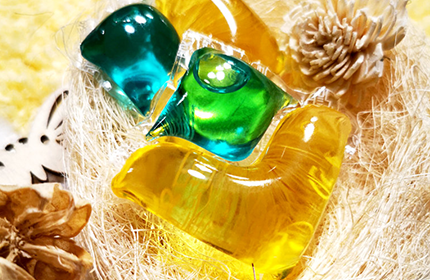- All
- Product Name
- Product Keyword
- Product Model
- Product Summary
- Product Description
- Multi Field Search
Views: 0 Author: Site Editor Publish Time: 2025-03-17 Origin: Site
Plastic wraps, labels, and food packaging are everywhere—they’re convenient, useful, and, unfortunately, a major contributor to global waste. The good news? There’s a promising solution on the horizon: edible water-soluble films. These innovative materials offer a way to reduce food packaging waste without sacrificing practicality. But what exactly are edible films, and how are they poised to revolutionize the food industry? Let's explore.
Edible water-soluble films are thin, biodegradable sheets made from food-safe ingredients. Unlike traditional plastic packaging, these films dissolve in water or can be safely consumed, leaving behind no waste. They're crafted from natural polymers such as starch, proteins, or seaweed derivatives, making them biodegradable and environmentally friendly.
While they sound futuristic, water-soluble films are already making waves in industries like medicine (think of dissolvable pill casings) and laundry (those handy detergent pods). Now, their potential in food packaging is getting closer to hitting the shelves.
The appeal of edible films is twofold—reduced environmental impact and enhanced innovation in food storage and wrapping, which make them a game changer for sustainable packaging.
Food packaging plays a pivotal role in preserving, protecting, and transporting food. However, this convenience comes at a significant environmental cost.
Here are some sobering statistics to illustrate the problem:
● A staggering 40% of plastic production globally is for packaging, with single-use food wrappers and containers accounting for much of this.
● 300 million tons of plastic waste are generated every year, and nearly 79% ends up in landfills or the ocean.
● Plastic can take upwards of 500 years to decompose, leaching harmful chemicals into the environment during that time.
With consumers worldwide demanding more sustainable alternatives, the food industry faces immense pressure to innovate. Enter water-soluble films—a technology that could address these growing concerns.

Water-soluble films offer exciting possibilities that go beyond traditional food packaging. Here’s where innovation is at its peak:
Imagine unwrapping a snack, then eating the packaging instead of tossing it into a trash can. That’s precisely what edible films make possible. Companies are experimenting with water-soluble starch and protein-based films to create wraps for items like sandwiches, energy bars, and candies. Not only are these films environmentally friendly, but they also offer added flavors, nutritional enhancements, or protective coatings for the food they contain.
For example, researchers are creating edible wraps made from casein, a milk-based protein, that is fully biodegradable and 500 times more effective at preventing oxygen exposure than plastic. This innovation makes it ideal for cheese, meat, and other perishable goods.
Pesky fruit stickers, meet your eco-friendly replacement. Dissolvable labels are designed to eliminate waste while maintaining functionality. Made with food-grade materials, these labels dissolve in water or saliva, making them safe for consumption. They’re already being applied to fresh produce like apples and bananas, helping to minimize plastic waste on a global scale.
Single-serving meal ingredients, coffee, or spices wrapped in water-soluble films can be dropped directly into water or a pan without removing the wrapper. This innovation reduces food waste and packaging at the same time. Picture a pre-measured, individually wrapped portion of tea or bouillon dissolving in hot water—you get your product perfectly and conveniently, with zero waste.
Seaweed is surging as a popular base material for water-soluble films due to its abundance, renewability, and biodegradable properties. Notably, the London-based startup Notpla has developed seaweed-coated sachets and linings for drink packaging. They’ve even created small water pods that marathon runners can pop directly into their mouths while on the go.
What makes these edible films stand out from other sustainable packaging options? Here are some compelling advantages:
Unlike traditional plastic, edible water-soluble films are made from renewable, biodegradable resources. By replacing single-use plastics with these dissolvable materials, industries can drastically cut waste and pollution.
Since edible films are crafted from food-grade materials, they’re completely safe for human consumption. Additionally, they can deliver practical benefits like oxygen barriers or moisture retention, further extending the shelf life of food products.
Water-soluble films go beyond sustainability—they enhance convenience. From single-serving dissolvable packets to edible wraps that add flavor or nutrition, these advances cater to modern consumers’ need for both ease and responsibility.
Brands adopting edible films signal a commitment to sustainability, giving them a competitive edge. With consumers increasingly choosing companies that align with their eco-conscious values, these films can boost customer loyalty while creating a compelling marketing story.
While the future of edible films is bright, some challenges remain:
● Cost: Producing water-soluble films currently costs more than traditional plastic packaging. Scaling up production and adopting these alternatives industry-wide will require significant investment and advancements in manufacturing processes.
● Durability: Edible films can be more fragile and less moisture-resistant than their plastic counterparts, which may limit certain applications.
● Consumer Adoption: Educating consumers to trust and understand these new “edible” materials is key to widespread adoption. While the idea of eating your food packaging is exciting, it may take time for customers to feel comfortable.
Experts agree that sustainable innovation like water-soluble films is the future of packaging. While challenges remain, the food industry's swift pivot toward eco-conscious solutions is promising. Continued research, investments, and consumer education will likely make edible films both more accessible and practical for everyday use.
Key global brands are already experimenting with water-soluble wraps, and startups are continuously improving their technology. Industry players must seize the opportunity to reduce their environmental footprint while catering to growing demand for sustainable practices.

Edible water-soluble films represent a revolutionary step forward in addressing one of the food industry’s most pressing challenges—wasteful packaging. From dissolvable labels to snack wraps you can eat, these innovations promise convenience, sustainability, and an entirely new way of thinking about packaging.
For businesses and consumers alike, now is the time to explore these forward-thinking solutions. Together, we can move closer to a truly sustainable food system.